Crappie Fishing 101: How to Catch Crappies
Crappie fishing offers a lot of angling delight, delicious food for the table, and the chance to enjoy a lot of fishing action with friends and family on bountiful fish across the country. Once you understand their preferred habitat, behavior, and baits, you can capture crappie consistently.
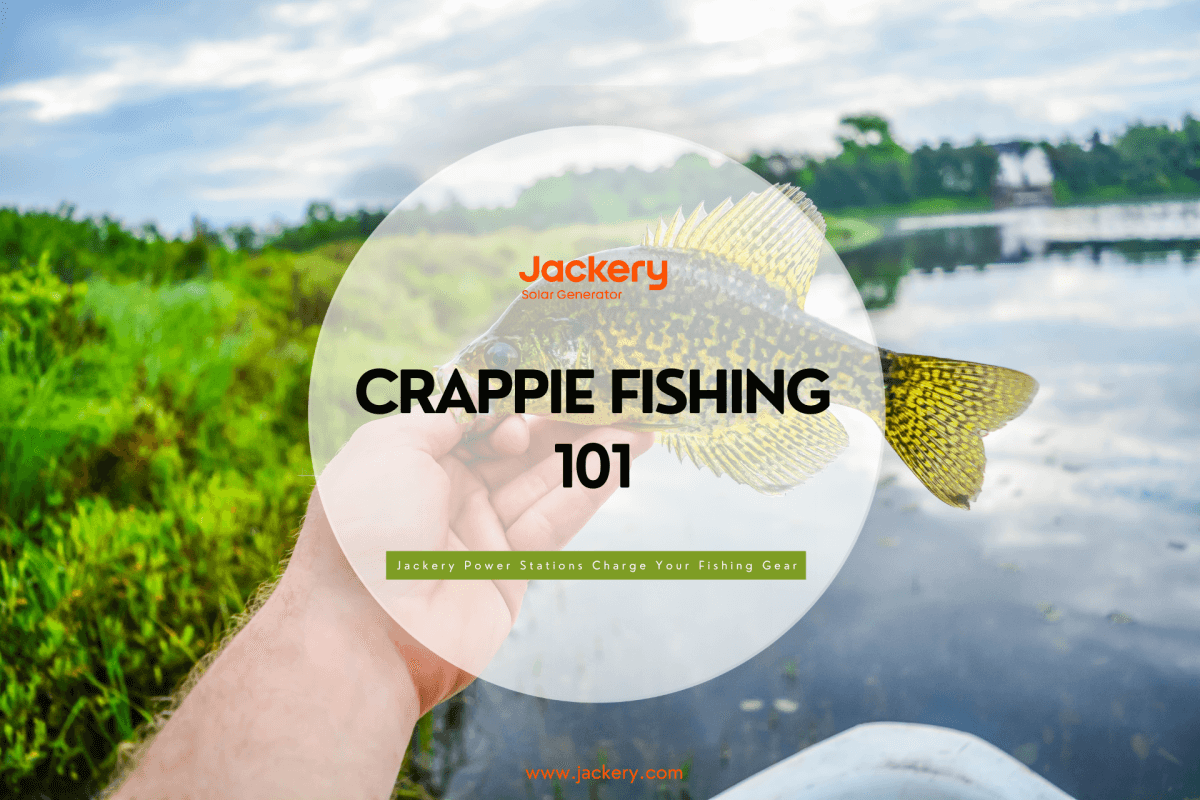
Crappie is, without a doubt, one of American favorite species to pursue. They are plentiful, aggressive fish that also makes a great fry. Whether bobber fishing in the spring or ice fishing in the dead of winter, these are two of the best fishing opportunities available to anglers nationwide.
However, the key to successful crappie fishing is understanding seasonal patterns that make crappie easier to locate and target. This page explains crappie fishing gear and year-round crappie fishing techniques. We recommend Jackery Explorer Power Stations as your power master during crappie fishing, specifically, the Explorer 300, which is ideal for fishing due to its lightweight, silent operation, and portability.
|
 |
|
|
- 293Wh capacity and lithium-ion battery - 300W rated power and 500W peak power - Easy to take with a handle, weighing only 7.1 pounds - 2*AC outputs, PD USB-C, QC3.0 USB-A, and 12V carport - No noise when crappie fishing |
What is Crappie Fishing
Crappie is among the most sought-after sport fish in the United States. These fish are also known as white perch, sac-a-lait, calico bass, and paper-mouth. The crappie is the most distinctive and prominent member of the sunfish family, Centrarchidae. There are white and black crappies. Both species are regarded as excellent sustenance and sport fish, and anglers prize their sweet, white, flaky flesh.
Black crappie prefers milder, deeper, and more abundantly vegetated waters than white crappie. This includes ponds, sloughs, rivers, streams, and backwater lakes. White crappie inhabits watercourse backwaters, slow-moving streams, sand- and mud-bottomed pools, and small to substantial rivers, lakes, and ponds.
Crappies primarily consume minnows, and minnows hide in vegetation or weeds to avoid being swallowed. The key to successful crappie fishing is to target locations where minnows conceal. This includes downed trees, bushes, ancient piers, flooded vegetation, moss-covered shoals, sunken boats, docks, and brush piles.
Crappie Fishing Gear
To capture crappie, you need a flexible rod, a reel, a light line, and a bait of your choosing, which may require a hook and lightweight. If you only want to fish vertically, you can get by with a stiffer, lengthier jigging rod. In most situations, crappie fishing equipment can be summed up in a single word: lightweight. Typically, your complete setup will consist of lightweight jigs, a light line, and a light rod.

- Lightweight Rod: For trolling and keeping the lure higher in the water, you can use up to a 10-pound test line. Many anglers employ the same rods they use for other panfish in addition to lighter-weight rods for trout and bass.
- Crappie Poles:There are crappie-specific poles up to 16 feet long and incorporate a reel into the handle. Thus, you can cast your bait straight down without spooking the fish by approaching too closely to their habitat.
- Crappie Jigs:Tungsten, glass, and lead jigs have special fall rates and densities. In most instances, jigs weighing between 1/32 and 1/16 ounces will suffice.
- Crappie Lures & Baits: On days when crappie is particularly aggressive, it's challenging to beat plastics, as they enable you to get to the fish faster and require less time re-baiting. Additionally, soft plastics offer a more dynamic presentation. Whether you are using minnows in the autumn or spikes in the winter, it is always advantageous to add natural movement and scent to your line.
- Lightweight Portable Power Station: When you're out on the water enjoying a peaceful day of crappie fishing, it's a great idea to use a solar power station to charge your phone, fish detector, electronic rod, and even your boat.
Power is required for electric fishing rods, reels, sonar fish finders, boats, and yachts. Imagine you're in the midst of a fishing trip when your boat refuses to start or your electric fish finder malfunctions because you forgot to charge it. The solar power station utilizes eco-friendly and limitless solar energy.

Jackery is the leading manufacturer of solar products, including solar generators, solar panels, and power stations. Jackery Explorer power stations are generators powered by rechargeable batteries. Equipped with an AC outlet, DC carport, and USB charging ports, they can charge all your fishing equipment, including an ice maker, an electric fish finder, etc.
Due to its compact size and functional design, the Explorer 300 power station is ideal for crappie fishing excursions. With a power capacity of 293Wh, it can power rudimentary fishing equipment. It only requires 2.5 hours to recharge fully while simultaneously charging via a 90W wall charger and 60W USB-C PD charger. The Explorer 300 can also be charged via solar panels, vehicles, or generators. The Explorer 300 portable power station is lightweight, fashionable, and portable due to its user-friendly design, compact size, and sturdy handle.
|
Series |
Capacity |
Ports |
Recharge Time |
Electronics |
|
Jackery Explorer 300 |
293Wh |
2*AC Output: 110V, 60Hz, 300W (500W Peak) USB-A Output: 5V, 2.4A USB-C Output: Quick Charge 3.0, 5V, 3A Car Port: 12V, 10A |
SolarSaga 100W: 3.5H |
Fishing Reel(60W) 4.2H Fishing Rod(10W) 25H USB Lure(2.5W) 100H Fish Finder(150W) 1.7H Fishing Cooler(60W) 4.2H Phone(iPhone) 30Charges Light(5W) 27H Fan(15W) 18H |
|
Wall Outlet + USB-C PD: 2H |
||||
|
Wall Charge: 3.5H |
||||
|
Car Charge: 3.7H |
Watch the video to learn more about fishing and the importance of Jackery power stations.
Where to Fish for Crappies
For a good reason, crappie is among the most popular game species in the United States. They are enjoyable to catch for anglers of all skill levels, whether novices or tournament pros. You can capture crappie in water bodies across the nation.
In most cases, crappie fishing regulations are less stringent than those for other species due to the fish's widespread distribution and abundant population. Many states have daily creel limits, but few have minimum size restrictions.
Crappies are structure-oriented fish, so when crappie fishing, they always search for submerged objects such as fallen trees, logs, and reefs. Finding the right location to fish for crappie is crucial because they swim in schools and remain in particular areas.
Stay energized if you wait around a log that appears to be the perfect fishing location but find nothing; keep moving and look for additional structure, and there's a good chance you'll find your hot place. During the warm months, trees that have fallen into the water have great potential. Still, as the temperature drops, crappie are likely to migrate deeper, making structures extending into the depths, such as bridge pilings, more likely spots.
Crappie Fishing 101 in 4 Seasons
Crappies, unlike saltwater fish, are trapped in the lakes and ponds they inhabit, so there is no migration pattern to monitor, and crappie season is year-round in most states. Crappies can be caught at any time, season, or in nearly every condition. Each season has advantages and disadvantages, but the consensus is that the spawning season is the finest and most effortless time for crappie fishing.
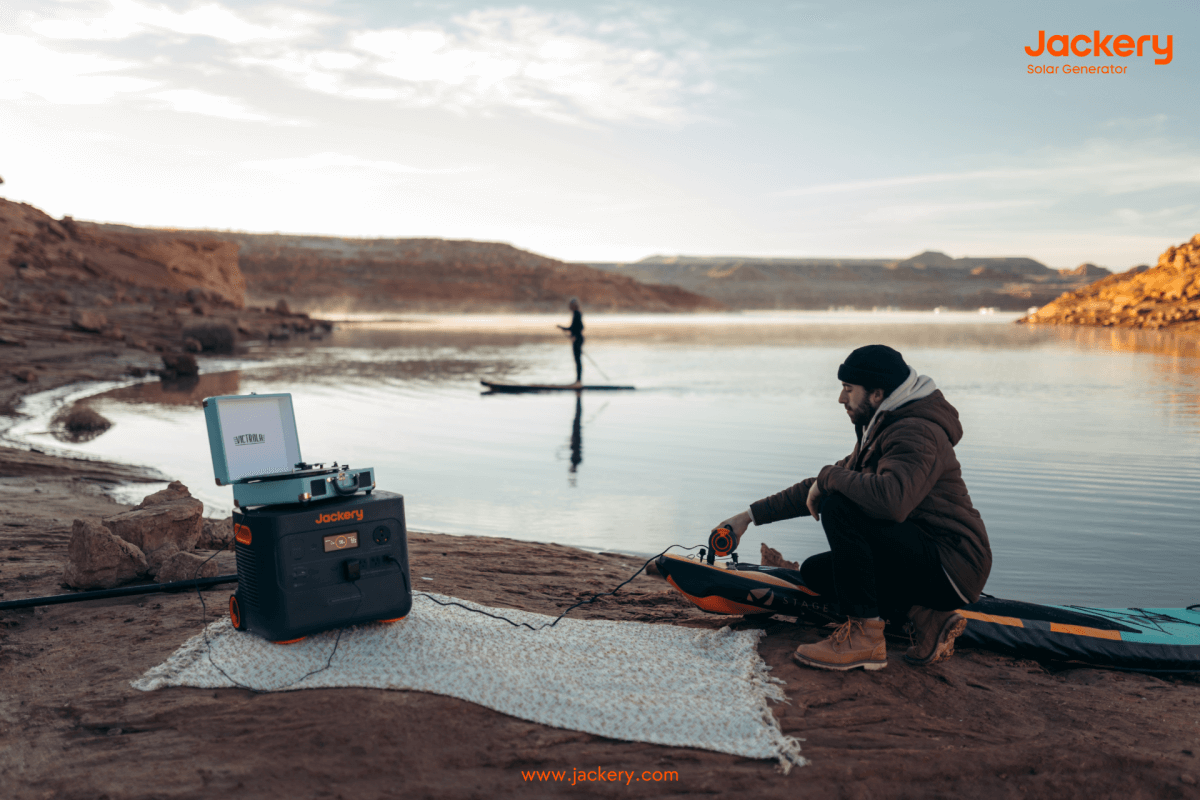
Spring Crappie Fishing Tips
Every year, swarms of minnows spawn in the shallows. This can happen a month or so after ice-out in the northern states or even towards the end of the hard-water season, whereas, in the Southern states, migration can begin as early as February. Anglers have a large window to target this massive concentration of fish and the subsequent pre-spawn feasting frenzy, regardless of when it starts.
- Light Gear for Spring Crappie Fishing: Nothing but light or ultralight tackle will suffice to properly present tiny lures and detect subtle impacts. Small 500 to 1000-size reels with a 4-pound-test line and an ultralight 6-foot rod will suffice.
- Water Temperature:Crappies begin migrating to the shallows when water temperatures exceed 50 degrees and spawn when water temperatures are well above 60 degrees. If you are between 50 and 65, it's time to hit the water.
- Lures for Spring Crappie Fishing: Presentation is crucial, as pre-spawn crappie are frequently at particular depths and receptive to a specific forage. Tiny tubes and jigs can be fished as-is or beneath a small fixed cigar float to maintain them at the fish's eye level.
Summer Crappie Fishing Tips
Even though the reproductive frenzy is over, plenty of crappie action is still available if you alter your approach. After spawning, crappie migrates from reservoir tributary arms along submerged stream channels to the main body of the lake. Although they are unlikely to be as densely grouped as they were during the spawn, they are still in predictable locations and readily respond to live bait and lures.
- Catch Post-Spawn Crappie: With the lake's temperature exceeding 80 degrees, crappie will typically be found in creek and river channels. In 20 to 30 feet of water, look for them suspended near or clinging to stumps, brush piles, and inundated standing timber adjacent to tracks. Mark Channel declines with buoys, then use a Kentucky rig for fishing for crappie.
- Use Crank-baits:When lake temperatures reach approximately 75 degrees, post-spawn crappie will be dispersed along the first drop-off they encounter adjacent to their spawning grounds — typically 12 to 18 feet deep. Now that these fish are suspended rather than clinging to the bottom, the most effective technique is to cover a great deal of water by slowly drifting small crankbaits.
- Offshore Humps: Even if the lake temperature exceeds 90 degrees, you can still fish for crappieby focusing on offshore humps. Target those with a maximum depth of 15 feet, particularly if they emerge from deep water near a flowing channel.
Autumn Crappie Fishing Tips
The hunting season is the only positive aspect of autumn for many crappie anglers. They use cold fronts, reservoir drawdowns, and sluggish fish as an excuse to switch to bows or rifles. However, slabs can still be caught at this time of year. Here are some strategies for fall crappie fishing.
- Fall Crankbait Tips: A creek-channel drop-off bordering a shallow flat is also likely to hold crappie at this time. I was trolling a 200-series Bandit crankbait at 2 to 3 mph with a 20-pound braided line and a soft-action bass cranking rod.
- Spoon Lures:When the leaves have fallen, and the lake's surface temperature has dipped below 60 degrees, crappie will have fattened up on shad. Locate baitfish colonies suspended off points at the mouths of reservoir creeks using a fish finder, then jig a 1/2-ounce spoon just above the school. To rig the spoon, use a 6-foot medium-action spinning rod, a 20-pound monofilament, and a 2-foot fluorocarbon leader.
- Use Portable Power Station: It is essential to use a portable power station to charge your crappie fishingequipment, particularly when the water temperature drops. The heavy water waves or heavy rains necessitate an increase in work capacity. The Jackery Explorer power station is the finest tool for quietly charging devices.
Winter Crappie Fishing Tips
Everyone enjoys waking up during the hard-water season to an unseasonably warm air mass, near-normal barometer, low wind, and manageable precipitation. Unfortunately, this confluence of conditions occurs so infrequently.
Before and during a storm, crappie and other panfish become incredibly aggressive; you must know where to locate them. Crappies spend most of the winter in 20 to 22 feet of water, just off the bottom. However, as a cyclone approaches, fish will rise in the fluid column, removing in depths as low as 5 or 10 feet.
If you learned how to regulate the depth, you would be fishing below the fish. To prevent line twists, using 2- or 3-pound monofilament is imperative. After a storm passes, fish are more likely to follow the baitfish migration rather than suspend in the water column.
Crappie Fishing FAQs
The following shows the frequently asked questions about crappie fishing:
1. When is the best time for crappie fishing?
This depends on your location. Some individuals prefer the spring month nearest to spawning. November is the finest month for me as an individual who resides in the middle of the United States. Crappies can be caught rapidly when the water temperature is between 50 and 58 degrees. With the most aggressive crappie of the year, you can expect size, quantity, and dense mid-depth cover. However, it is the month when your area's water temperature reaches 50 degrees.
2. What size of solar generator do I need for crappie fishing?
Except for power stations, the solar generator is the finest tool to bring on crappie fishing trips, as it converts solar energy into unlimited electricity. Jackery Solar Generators are renowned for their durability, portability, and capacity. By your energy consumption and appliance wattage, you can choose from more than nine different varieties of solar generators. The capacities range between 3024Wh and 240Wh. Here is the formula for calculating how long the Jackery solar generator will take to charge your fishing electronics:
Working time = solar generator capacity*0.85 / your device's operating wattage
For example, if you charge your fishing reel (60 Watts) with a Jackery Solar Generator 300 (293Wh capacity), the working time is 4.2H (293Wh*0.85/60W).
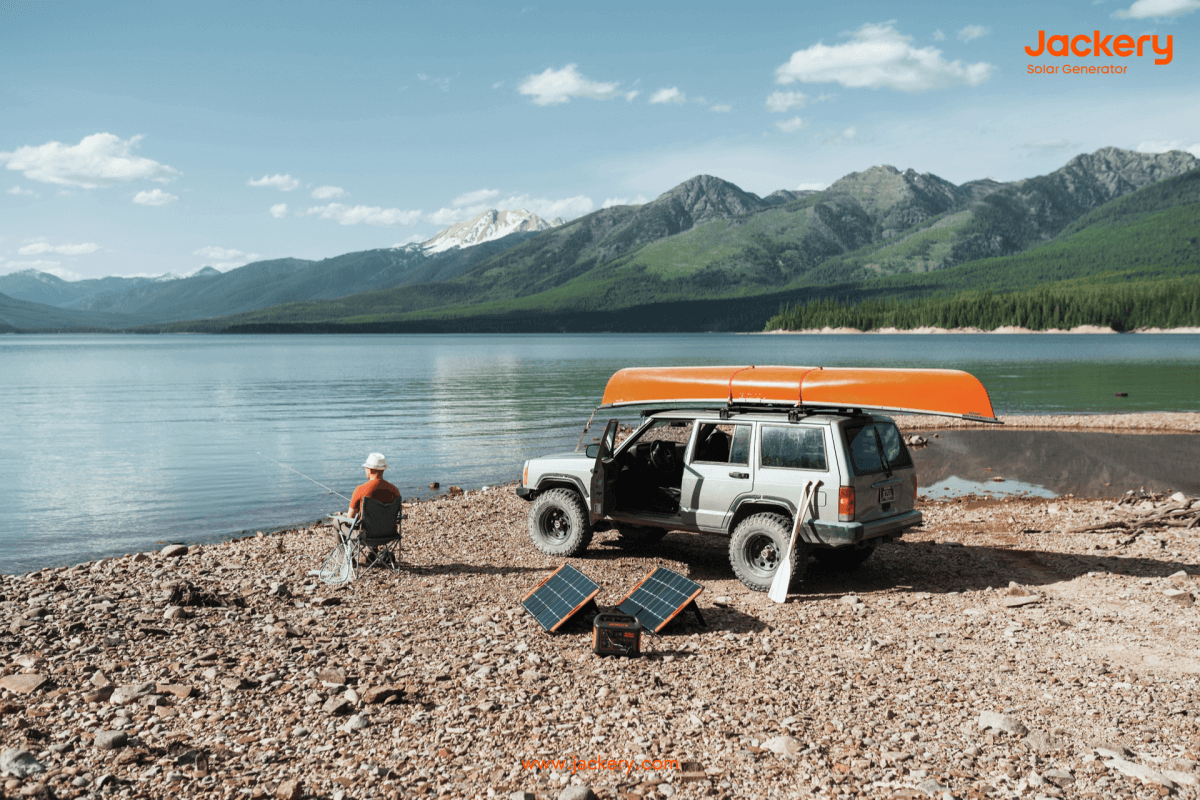
3. What is the best crappie fishing tactic?
It is difficult to tell which technique is the best. Some anglers use live lures sparingly. However, some fishermen always use live bait to capture crappie. Also, some anglers never troll, spider rig, or drive jigs, while others prefer to cast and pitch to crappie or potential crappie habitat.
The finest technique is the one that tempts crappie most effectively and consistently. You should perfect this technique if you capture more large crappie using vertical jigging. Visit various lake sections, fish at different periods of the day or month, and perfect your technique.
Final Thoughts
To be successful, you must establish a fishing pattern regardless of the season or location. What security does crappie employ? What's the depth? Yellow or blue jigs? When are they at their peak performance? With minnows or with jigs? Change your strategies until you discover what works best.
In the spring, anglers should begin fishing visible shoreline cover before proceeding to crappie beds. Summer and winter crappie that reside in the depths is challenging to locate. Remember to charge your electronic fishing equipment silently with a Jackery Explorer Power Station on your crappie fishing trips.
Disclaimer:
The runtime mentioned for appliances powered by Jackery is for reference only. Actual runtime may vary under different conditions. Please refer to real-world performance for accurate results.



















































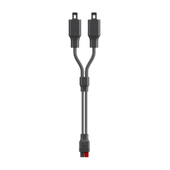















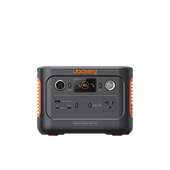

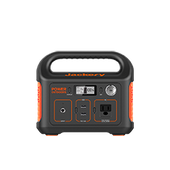




























TY this inflr.G
TY for providing all this information especially since I a novice at fishing.
Leave a comment